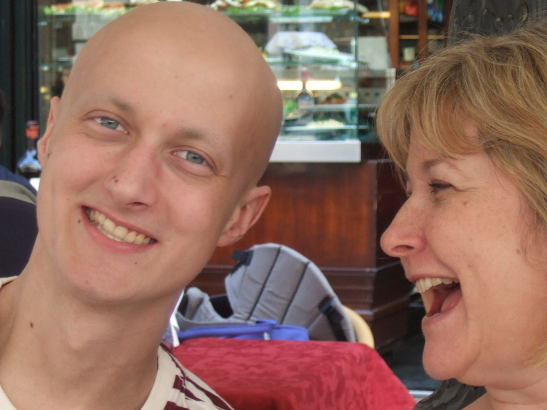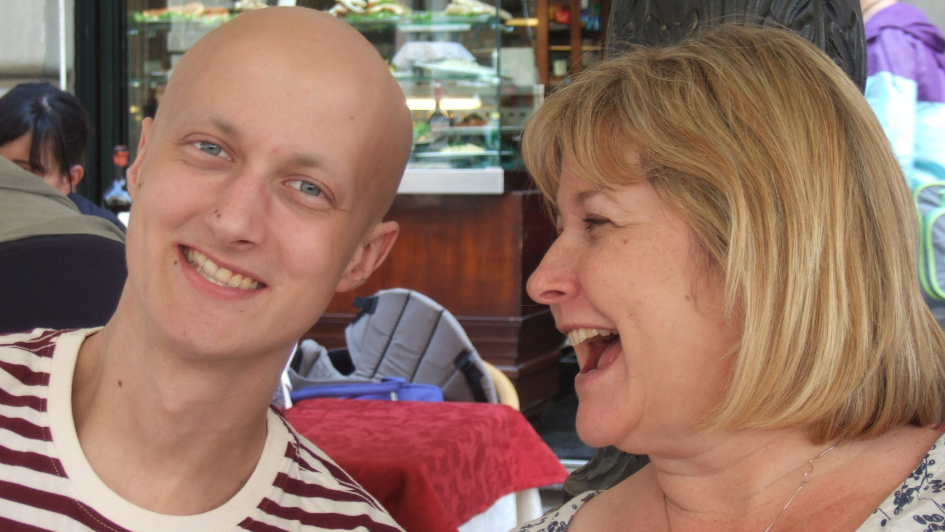
Image: Tom with his mum Nikki. Credit: The Tom Bowdidge Youth Cancer Foundation
The youngest child of Richard and Nikki, and Emma’s brother, Tom was known for his kindness. “He loved animals,” Nikki says, “and we’re sure he would have gone on to work with them in some way. At one point he talked about training as a vet.” Tom was also a keen sportsman and an excellent goalkeeper.
“He’d been planning to go to university,” Nikki says, “but six months after he was diagnosed, on the way back from one of our many hospital appointments he said he was going to set up a charity instead and told us exactly what he wanted to achieve.”
Tom’s vision was for his foundation to fill in the gaps of need for teenagers going through cancer. A crucial part of that was research.
“There was hardly any research into treatment, let alone a cure,” Nikki says. “When Tom was diagnosed we were told ‘there’s nothing – we're going to have to proceed as if you've got a Ewing sarcoma, because it's the closest thing’.
“The treatment regime itself was so brutal and debilitating that Tom was never well enough to even have a bucket list.”
Hope came in the form of an offer for Tom to travel abroad. “We went to see a consultant in Milan who said he would be able to operate. I really thought they were going to save him.
“And then Tom’s condition deteriorated, and I remember the consultant telling me the operation couldn’t happen and it wouldn’t ever happen, and we just fell through the floor.
“That’s now the drive for us. We don't ever want another mum or dad to have to sit there and hear that news. I know there are so many out there still having to hear it, and we’ve got to stop this. Nobody should ever have to go through that.”
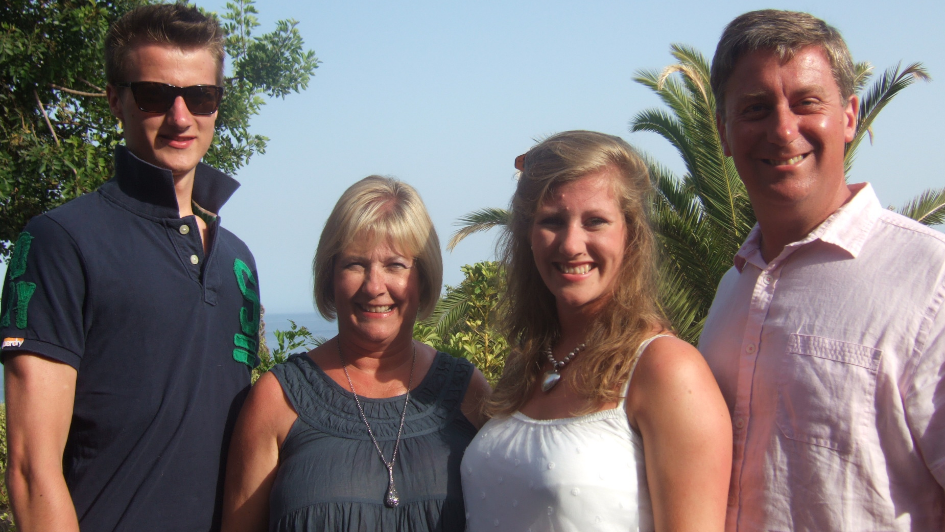
Image: Tom, his mum Nikki, sister Emma and dad Richard (from left to right). Credit: The Tom Bowdidge Youth Cancer Foundation
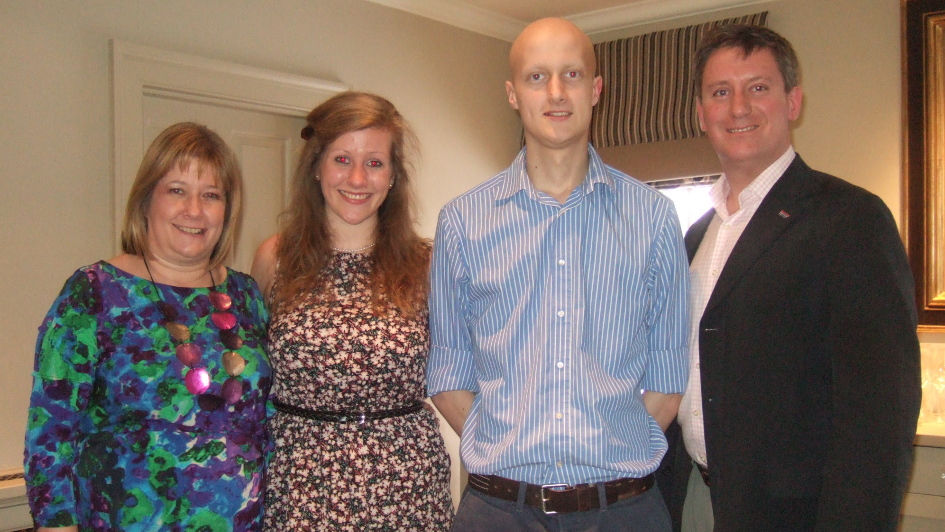
Image: Nikki, Emma, Tom and Richard (from left to right). Credit: The Tom Bowdidge Youth Cancer Foundation
In the minutes before he died, Tom told his mum she would need to ‘crack on without him’ and continue his work.
We are striving to improve the lives of people with all types of cancer – including those with the most challenging to treat. Your support for our work into hard-to-treat cancers will help us continue to make more discoveries, find more cures, and save more lives.
A dedicated team
Six months later Nikki and Richard launched The Tom Bowdidge Youth Cancer Foundation and it’s gone from strength to strength, raising its first million pounds in February 2020.
The Foundation has partnered with the ICR, supporting scientists led by Professor Janet Shipley, one of the world-leading authorities on research into soft tissue sarcomas. Her team aims to find more effective and kinder treatments that target the specific molecular defects that drive the growth of these deadly tumours.
Professor Shipley’s work into DSRCT is also generously supported by other family-led charities – The Kelly Turner Foundation and Rob’s ARTTT (A Rare Teenage Tumour Trust).
The Kelly Turner Foundation was set up by Martin and Linda Turner, in memory of their daughter Kelly who died of DSRCT in 2017, aged 17. Rob’s ARTTT was set up by Rob Holland, who died of DSRCT in 2007, aged 15.
Because of its relatively rare incidence DSRCT is studied by very few scientific research groups. Progress to understanding its biology is generally behind that of other types of cancer, which has hindered the development of new therapies.
Nikki says: “We were thrilled when we discovered that the ICR carries out specific research into DSRCT, and we know they are dedicated to understanding DSRCT and other types of soft tissue sarcoma that affect young people.”
The partnership has now been in place for seven years and researcher Dr Ewa Aladowicz within Professor Shipley’s lab is currently being funded by The Tom Bowdidge Youth Cancer Foundation.
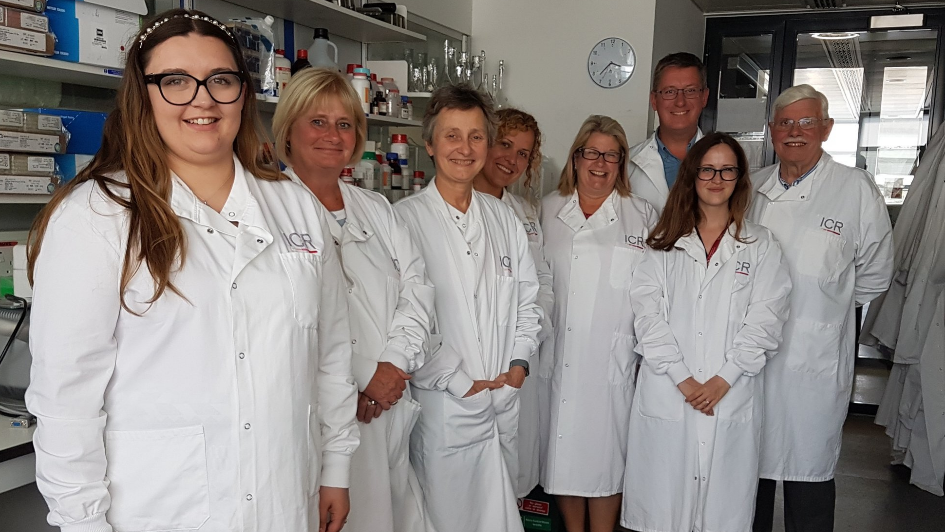
Image: Nikki and Richard Bowdidge visit Professor Shipley's laboratory with trustees from the Tom Bowdidge Youth Cancer Foundation. Professor Shipley is third from left. Credit: Nicola Shaw
New treatments urgently needed
As well as being Head of the Division of Molecular Pathology at the ICR, Professor Shipley also leads a team focused on identifying molecular markers of high-risk in young patients with sarcomas, and understanding how the progression of these cancers is driven.
Professor Shipley decided to go into this area of research precisely because of the devastating impacts on patients and their families. “Better management and new treatments are urgently required,” she says. “We believe that greater understanding of the unique molecular biology of high-risk sarcomas is the key that will lead to improving the outcomes for young patients.”
Professor Shipley’s research in the lab has informed clinical research and she is biology lead on an international sarcoma trial, as well as being involved with various national and international groups. “This both helps our research and gives us routes to take research findings forward into the clinical setting,” she says.
It's not yet fully understood why DSRCT mainly affects young people. Professor Shipley says that as with most cancers in children and young patients, fewer genetic changes are found in their cancer cells than are seen in adult cancer cells.
She says: “Cancers in young people appear to be driven by biological processes at a molecular level that are more usually seen in cells during early growth and development before birth. The genetic defects found in the cancerous cells of DSRCT appear to hijack these molecular processes and keep them in a primitive state where the cells are constantly dividing.
“It may be that the cells most prone to survive the genetic changes that lead to DSRCT are only present in younger people.
“It’s also known that DSRCT affects boys more than girls and that some tumours are enhanced by the presence of androgen hormones, which are present in both boys and girls, but at higher levels in boys. So, androgens as a driver of DSRCT growth in at least some cases may explain why tumours arise in and around puberty. This knowledge is providing new approaches to investigate potential new treatments for DSRCT.”
Making progress
Professor Shipley says there are two main areas where her team and others have made significant research progress in recent years towards improving treatment:
“Firstly, to be able to understand the underlying biology of DSRCT and to test the potential for new treatments, we need to be able to grow DSRCT cells and ‘model’ the growth of tumours. To do this we have been taking cells from DSRCT patients and using special techniques to grow them in the laboratory, including in 3D.”
The team has also added non-cancerous cells to these 3D models to discover the role that 'normal' tissue plays in supporting the cancer growth and preventing chemotherapy from working.
“Importantly, these laboratory models are also being used to test the potential of new treatments for DSRCT patients,” Professor Shipley says.
“Secondly, it has been known for some time that the hallmark of DSRCT is a genetic change in the cancer cells of patients.
“The genetic mutation fuses a gene called EWSR1 to another gene called WT1 resulting in a fusion gene called EWSR1-WT1. This fusion gene is not found in normal cells and is considered to essentially re-program the cells to behave as a cancer – to grow and divide uncontrollably and to spread around the body.”
Understanding how this fusion gene works, and how it interacts with other molecular features is a crucial part of the research, revealing new treatment opportunities that are currently being tested.
Professor Shipley says her team is grateful for and humbled by the family charity partners, which help to fund so much of the ICR’s research into cancers affecting children and young people. Their support is key to unlocking new treatments for the future.
“Our research would not be possible without them, and their fundraising efforts are heroic in ways that really inspire the whole team.
“Support from the Tom Bowdidge Youth Cancer Foundation, Kelly Turner Foundation and Rob's ARTTT charities provide the expert people and/or the resources that we need to perform research on DSRCT in our laboratory.
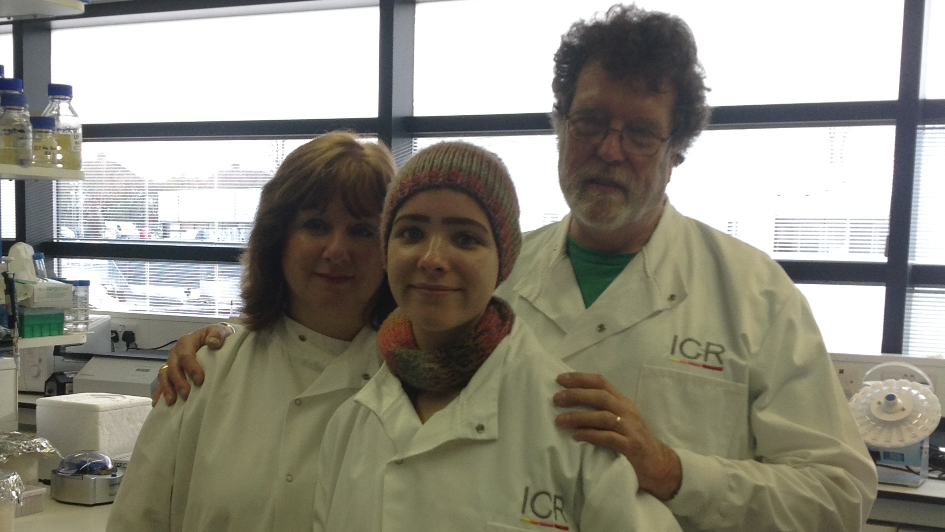
Image: Kelly Turner visits Professor Shipley's laboratory with her parents Martin and Linda. Credit: Nicola Shaw
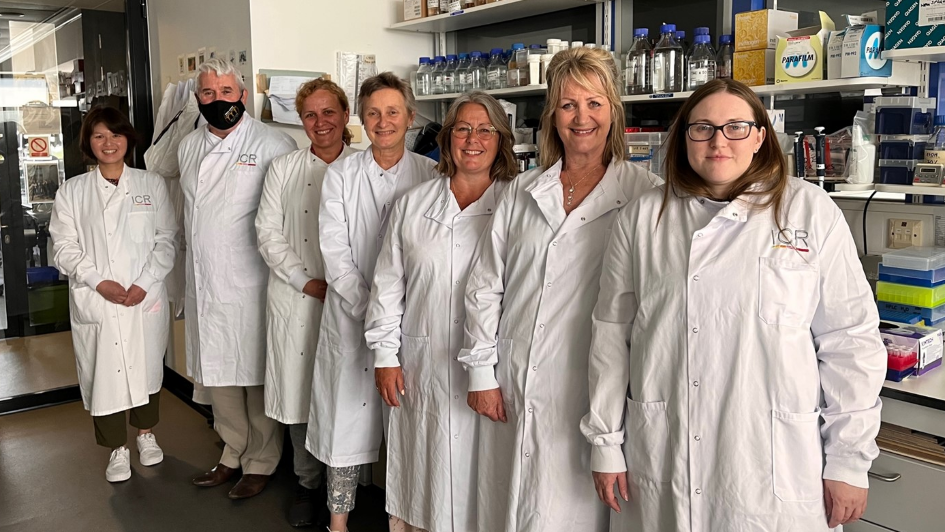
Image: The team from Rob's ARTTT visit Professor Janet Shipley (fourth from right) in her laboratory at the ICR. Credit: Nicola Shaw
“Research funding for rare types of cancer, such as DSRCT, may not be prioritised by larger charities and the focussed approach to raise funds for DSRCT and other rare cancers has a special role to play. This is critical in furthering our aim to improve the treatment and outcomes for young patients with DSRCT and other rare sarcomas.”
We are world-leaders in the study of cancer in children, teenagers and young adults. Our international research efforts are key in transforming how childhood cancers are treated.
Find out more about our family charity partners whose support and dedication drives our work forward.
